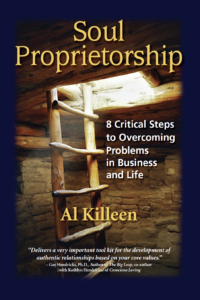
There are two types of commitment. We call them Type 1 and Type 2. Please allow me to distinguish them for you.
Type 1 is unwavering devotion to your desired outcome. This is the burn the ships, no turning back, pursuit of a mission’s objective.
Type 2 is an intention that is alterable by circumstance. I’ll say it again, an intention alterable by circumstance!
I recently read “No Easy Day” about Navy Seal Team Six and the pursuit of Osama Bin Laden. These intrepid warriors were on a do or die quest to manifest the benevolent values of JUSTICE for terrorists and FREEDOM from the fear of its leader.
Type 1 for the Navy Seals was simply and profoundly this: “We are eager to serve our country by enduring the intense training and preparation required to bring about justice and freedom. We are willing to risk our lives for these objectives”
For Seal Team Six, Type 2 would have sounded like this. “We intend to kill that evil bastard unless we crash a helicopter in the courtyard and those SOB’s shoot back.”
Obviously the famous outcome of this event was more effectively served by Type 1 commitment. Why? Only this type of commitment provides the necessary productive energy through inspiration, innovation, improvisation, creativity and perseverance to overcome the barriers they faced as circumstances changed as the mission unfolded.
The contrast is stark, right? Regardless, how many times in the past week have you experienced Type 2? Children are classic abusers of Type 2. My nine year old recently confessed that an invitation for a play date got in the way of her promise to clean her room.
Does anyone know an adult who stands up your invitation because they got a better offer?
Unfortunately, as employees and co-workers we are also masters of Type 2. Why is this?
The answer lies in another distinction I want to make for you, that between commitment (Type 1 that is) and compliance. The difference is that one includes authentic ownership and the other does not.
Compliance is imposed on us externally. Commitment is required of us internally.
Now the fact is that most of us have a boss of some sort. Compliance is part of life. We have rules and laws to follow. However, the skilled leader always makes sure that commitment is bigger than compliance. This is how you help people own a shared vision because the organizational values are just an extension of individual personal values. An effective leader consciously makes this connection for their team.
Every member of Seal Team Six wanted to kill OBL. Without the support of a high performing team doing their part, the one guy who did, never could have.
I have a challenge for you. From now on, consider a promise as a sacred expression of your truest principles. Be careful how you give it. And, become skilled in negotiating terms for delivering on it. If you can only make type 2 commitments, don’t make one at all.
In keeping with the theme, Seal Team Six informed their commanders, “Hell yeah we will put our lives at risk flying at night and violating sovereign airspace. However, we need these resources in order to deliver; Blackhawks, night vision, a cover team for outside of the compound walls, weapons of our individual choice, a well-rehearsed plan…”
In the end, their commanders were happy to provide the tools. By virtue of the requests themselves, the leadership knew that these guys truly owned the mission, Type 1 Commitment!
Start today calling people out on Type 2. Allow your people to negotiate for what they “can” deliver on. Most of them won’t let you down when they have input on some of the terms against the backdrop of already overloaded schedules. Doing this will show that you trust your team. It will sow the seeds in your organization for a true culture of commitment.


